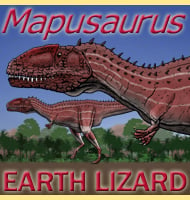Oceanotitan
In Depth Oceanotitan is a genus of titanisauriform dinosaur that lived in Western Europe during the late Jurassic. Further Reading - A new macronarian sauropod from the Upper Jurassic of Portugal. - Journal of Vertebrate Paleontology e1578782:1-23. - P. Mocho, R. Royo-Torres & F. Ortega - 2019.
